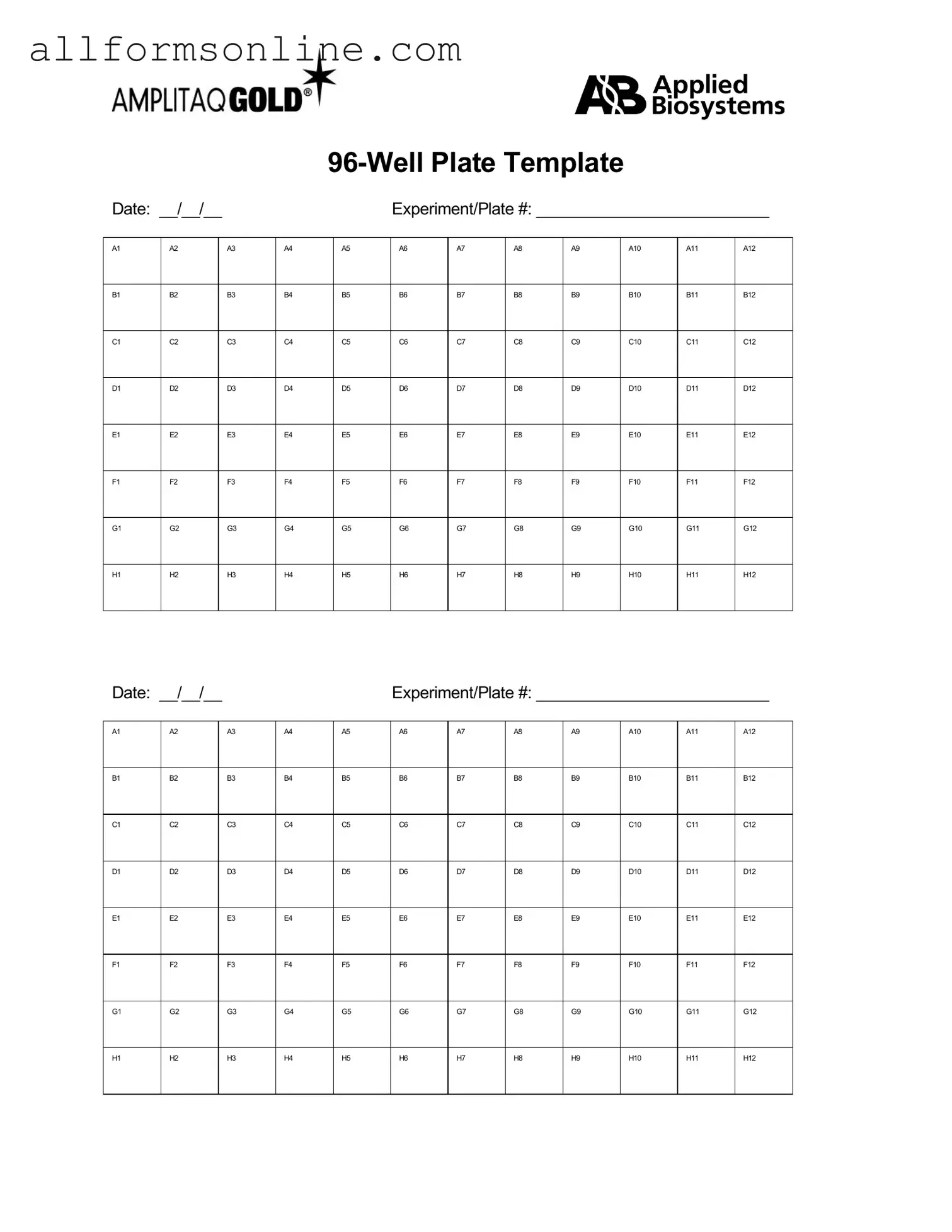What is the 96 Well form used for?
The 96 Well form is primarily used in laboratory settings for organizing and documenting experiments. It allows researchers to track samples, reagents, and results in a structured format, making it easier to analyze data and replicate experiments.
How do I fill out the 96 Well form?
Filling out the 96 Well form involves entering information in designated fields for each well. Typically, you will need to include details such as sample ID, reagent type, concentration, and any relevant notes. Ensure that you double-check your entries for accuracy.
Can I use the 96 Well form for different types of experiments?
Yes, the 96 Well form is versatile and can be adapted for various types of experiments, including PCR, ELISA, and cell culture assays. Just make sure to customize the entries to fit the specific requirements of your experiment.
Is there a specific format I need to follow when using the 96 Well form?
While there is no strict format, consistency is key. Use clear and concise labels for each entry. If your lab has a preferred format or template, it’s best to follow that to maintain uniformity across experiments.
Can I print the 96 Well form?
Absolutely! Most versions of the 96 Well form are designed to be printable. You can print it out and fill it in by hand, or you can fill it out digitally and print the completed version for your records.
What if I make a mistake on the 96 Well form?
If you make a mistake, it’s important to correct it promptly. You can cross out the error and write the correct information next to it. Alternatively, if you're using a digital version, simply edit the entry. Always initial any changes made for clarity.
Where can I find a template for the 96 Well form?
Templates for the 96 Well form can often be found online. Many scientific websites, lab supply companies, and educational resources provide free downloadable templates. Check with your institution as well; they may have their own version available.
How do I store completed 96 Well forms?
Once completed, store your 96 Well forms in a safe and organized manner. If they are physical copies, consider using a binder or folder. For digital versions, save them in a dedicated folder on your computer or cloud storage to ensure easy access and backup.
